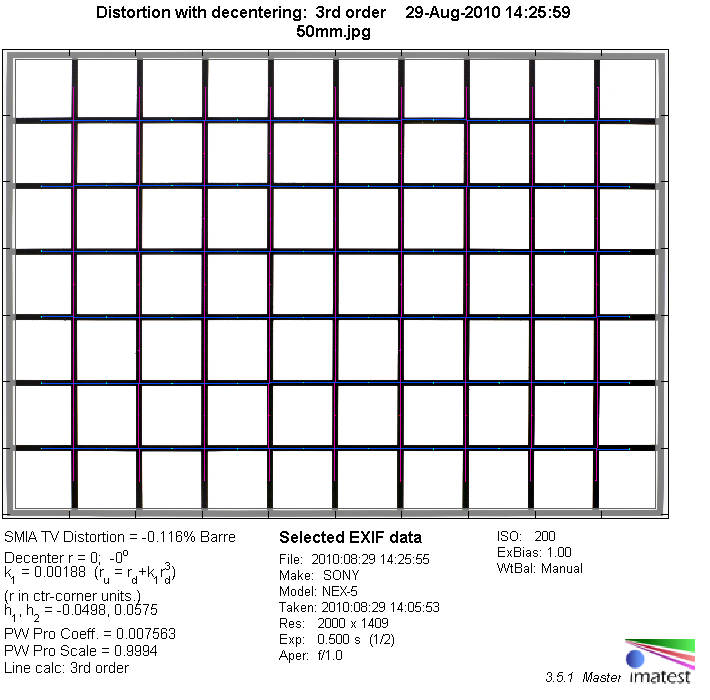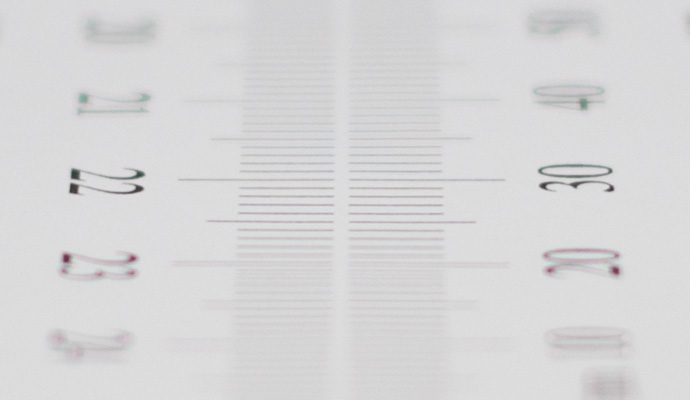|
Zeiss Planar T* 50mm f/2 ZM on Sony NEX - Review / Test Report - Analysis |
|
Lens Reviews -
Sony Alpha/NEX (APS-C)
|
|
Page 2 of 3

Distortion
The Zeiss lens produces a negligible amount of barrel distortion (~0.1%) which is irrelevant in field conditions.

Vignetting
Typical for full format lenses it has a walk-over on APS-C cameras with respect to light fall-off. Even at f/2 it's barely something worry about in real world situations and it's absolutely negligible from f/2.8 onwards.

MTF (resolution)
The Zeiss lens delivers a fairly impressive resolution across the tested aperture range. The center quality is already very good at f/2 and f/2.8 and the borders follow on a good level here. There's a boost in quality at f/4 - the center is lifted to excellent quality and the borders are also very sharp. Diffraction effects reduce the quality from f/11 onwards.
Please note that the MTF results are not directly comparable across the different systems!
Below is a simplified summary of the formal findings. The chart shows line widths per picture height (LW/PH) which can be taken as a measure for sharpness.
If you want to know more about the MTF50 figures you may check out the corresponding Imatest Explanations
Chromatic Aberrations (CAs)
Lateral CAs are very well controlled with an average pixel width of less than 0.8px at the image borders. This isn't really objectionable in field conditions.

Bokeh
The quality of the bokeh (out-of-focus blur) is, of course, a primary aspect of a fast prime lens. The Zeiss ZM produces a decent bokeh albeit not a perfect one. Out-of-focus highlights show an outlining effect at f/2. The highlight discs are perfectly even at f/2.8 but the circular aperture shape is already deteriorating at this settings and beyond. The quality of the blur in the critical focus transition zones is pretty smooth in the foreground, somewhat less so in the image background.

Bokeh Fringing / Longitudinal Chromatic Aberrations (LoCA)
LoCAs (non-coinciding focal planes of the various colors) are a common issue with relatively fast glass. As you can
notice below the halos have different colors - magenta (red + blue) in front the focus point and green beyond. This is primarily a problem at f/2 and f/2.8. The issue dissolves from f/4 onwards.
Upon closer observation you may also be able to spot a slight focus shift towards the background (when stopping down) - this is rather typical for fast lenses but we've seen worse lenses here.
|
Move the mouse cursor over the f-stop marks below to observe the respective LoCAs
|
| f/2 |
f/2.8 |
f/4 |
|

|
|